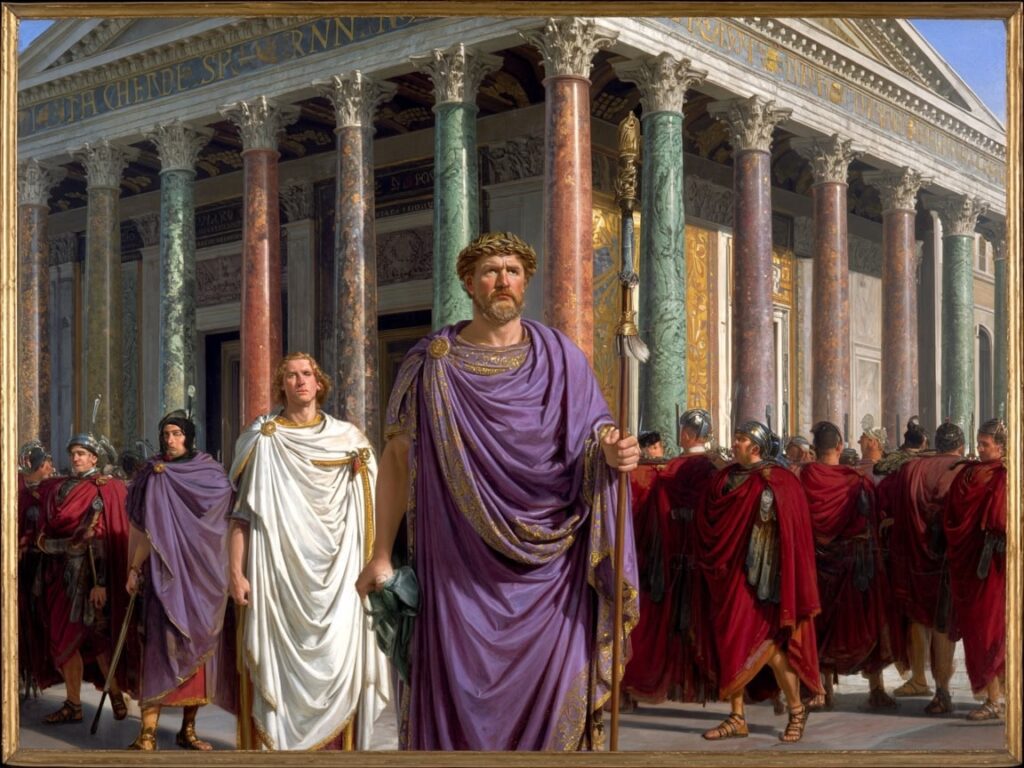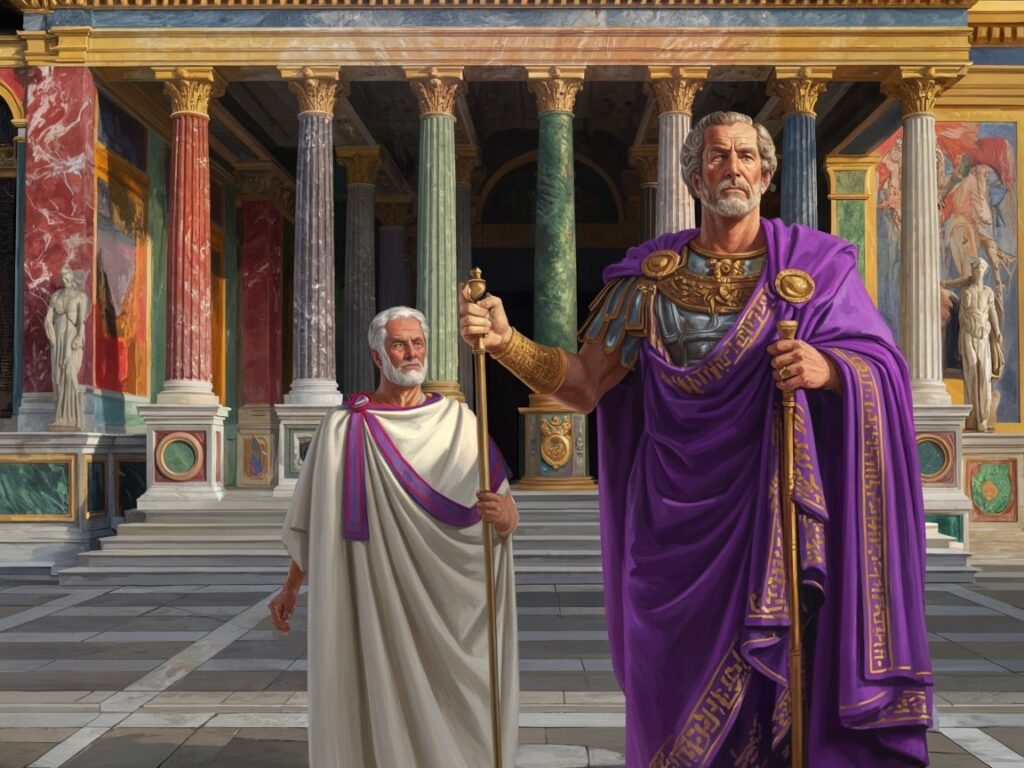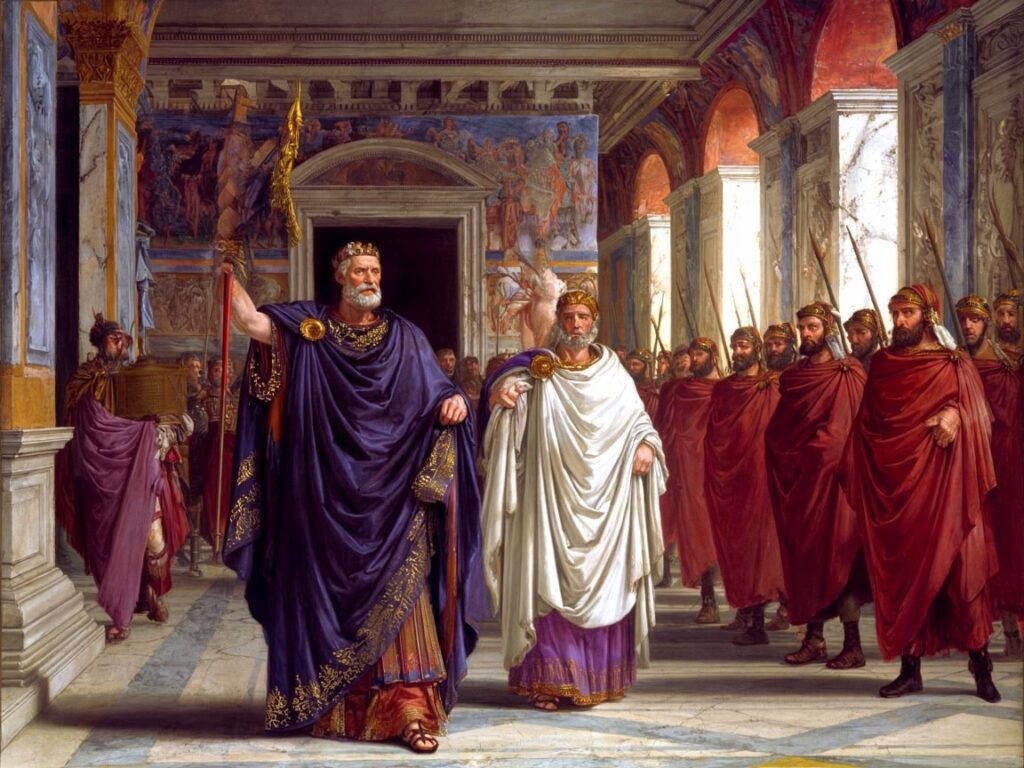Color held a significant role in ancient Rome, serving purposes far beyond mere decoration. The Romans mastered the art of using color as a powerful language—a tool to communicate identity, status, authority, and cultural values. Understanding Roman color symbolism reveals how this vibrant visual code shaped society and conveyed messages that were instantly recognizable to contemporaries.
In Roman culture, colors were carefully chosen and imbued with meaning. These meanings extended across multiple domains: from the intricate details of art, to the garments worn in daily life, and the grand designs of architecture. Each color choice was deliberate, signaling social hierarchy, political power, or religious significance.
This article explores how Romans used color symbolism in art, fashion, and architecture. You will discover:
- How specific colors identified rank and authority in Roman society.
- The symbolic roles colors played in famous artworks.
- Ways clothing colors communicated social standing.
- The use of vibrant hues in architectural elements to emphasize importance.
By examining these areas, you will gain insight into a sophisticated system of visual communication that defined Roman life and left a lasting legacy on Western culture.

The Role of Color Symbolism in Roman Culture
Color was a powerful way to communicate social status, political power, religious beliefs, and cultural values in Roman society. It wasn’t just for decoration; color was a complex visual language that instantly conveyed identity and authority.
Key aspects of color symbolism included:
- Identity and Authority: Certain colors were reserved for specific classes or roles. For instance, purple—the color made from expensive Tyrian dye—represented imperial authority. Wearing purple signified a direct connection to the emperor or ruling elite.
- Visual Language Beyond Aesthetics: Romans understood that colors conveyed messages more effectively than words in public spaces. A person’s rank, occupation, or religious position could be identified at first glance through the colors they wore in clothing or displayed in public art.
- Hierarchical Structure Reinforcement: Color boundaries reinforced social hierarchy. Ordinary citizens wore plain white garments, while magistrates and priests wore robes with distinct colored borders. This strict color coding maintained order by visually distinguishing ranks within society.
Roman culture embraced color not only for its beauty but also as a deliberate code—a symbolic system that reflected and upheld the intricate social and political structure of the empire. This deeper meaning made every shade more than just pigment; it became an essential element woven into everyday life and power dynamics.

Color Symbolism in Roman Art
Roman art colors were carefully chosen not just for decoration but to convey specific themes and messages.
Purple: The Color of Imperial Authority
Tyrian purple, extracted from sea snails, stood out as the ultimate symbol of imperial authority. Its rarity and high cost made it exclusive to emperors and the elite, visually reinforcing their supreme status. Portraits of emperors often feature robes dyed in this deep purple, a direct signal of power and divine right.
Red: The Color of Military Strength
Red carried a distinct meaning tied to military strength and valor. This color appeared prominently in depictions of soldiers, battles, and triumphs, emphasizing courage and dominance. The use of red pigments in frescoes or mosaics highlighted scenes of conquest and the might of Rome’s legions.
Examples of Color Symbolism in Roman Art
Notable artworks such as the Fayum mummy portraits display faces framed by garments with purple accents, indicating wealth or official rank. The Ara Pacis reliefs incorporate red hues to dramatize military victories under Augustus’s reign, blending artistic beauty with political propaganda.
The Impact of Color Symbolism on Roman Art
Roman artists mastered the language of color to deepen narrative layers and express social hierarchies through visual codes. The strategic use of purple and red remains a vivid example of how color symbolism shaped Roman art’s communicative power.

Color Symbolism in Roman Fashion
Colors in Roman clothing were important for showing social status. Clothes were more than just something to wear; they were a way of communicating visually that immediately revealed someone’s position in society.
Colors and Their Meanings
Here are some examples of how different colors in Roman fashion represented various social classes:
- Plain White Toga (Toga Virilis): Worn by ordinary male citizens, this simple white garment symbolized Roman citizenship and civic identity without the embellishments reserved for higher ranks. Its unadorned nature reflected modesty and adherence to traditional values.
- Toga Praetexta: Distinguished by its broad purple borders, this toga was worn by magistrates, priests, and certain young boys. The purple trim indicated authority and sacred duties, setting these wearers apart from common citizens. This garment reinforced social distinctions through color symbolism tied to official roles.
- Toga Picta: Entirely dyed purple and often embroidered with gold, this lavish toga was reserved for emperors and victorious generals during triumphs. It exemplified ultimate political power and military success, reflecting the exclusivity associated with the costly Tyrian purple dye.
The Power of Color
Color was not only used to indicate rank but also to convey prestige and responsibility within Roman society. Just like in art or architecture, the intentional use of colors in fashion communicated messages about identity and authority.
By understanding how the Romans employed color symbolism in their clothing, we can see a tightly interconnected system where appearance reinforced social order at every level.

Color Symbolism in Roman Architecture
Roman architecture made strategic use of color to convey significance and sanctity within its structures. Vibrant hues adorned key architectural elements, signaling status and reinforcing cultural values beyond mere structural function.
- Colored marbles were prized materials that enhanced the prestige of temples and public buildings. Varieties like red porphyry and green serpentine introduced rich visual textures, symbolizing wealth and divine favor.
- Despite the enduring image of pristine white marble ruins today, many Roman buildings were originally covered with painted surfaces. Facades, columns, and friezes often featured bright colors such as reds, blues, and golds, designed to captivate viewers and elevate the sacred or civic importance of the space.
- The use of temple colors carried symbolic weight; certain pigments were chosen to invoke spiritual presence or imperial power. For example, deep reds could symbolize divine energy or protection while gold leaf highlighted holiness and authority.
- Color enhanced architectural details like capitals, cornices, and statues, creating a layered visual narrative that communicated meaning at multiple levels.
This chromatic diversity demonstrated Romans’ sophisticated approach to visual storytelling in architecture. By integrating color thoughtfully, they transformed stone structures into powerful symbols that spoke directly to the social order and religious beliefs of their society. Such practices are part of a broader trend in ancient architecture, where color was not just an aesthetic choice but a crucial element of cultural expression.

Integration of Color Across Roman Visual Culture
The Romans were skilled at using color symbolism in various aspects of their society. They intentionally used color in art, fashion, and architecture as a way to express their identity and convey messages of authority to everyone, regardless of their social status.
1. A Shared Palette
Art, fashion, and architecture all used the same colors to communicate cultural values accurately. This concept of a shared palette can be further explored through resources such as 12 essential books about color, which delve into the significance and impact of color in various contexts.
2. The Power of Purple
Purple was associated with power and was consistently seen in the luxurious robes worn by emperors, the borders of magistrates’ togas, and the decorative elements of important buildings.
3. Red: A Symbol of Strength
Red represented military might and could be observed in statues, soldiers’ uniforms, and architectural details in public areas meant to honor Rome’s dominance.
This integration created a visual language easily understood by Romans regardless of literacy. Color functioned as an unspoken code reinforcing social hierarchy and collective identity. Citizens recognized their place within this system by observing these cues daily—from the clothes they wore to the monuments they passed.
The seamless connection between these different areas shows how color served as a powerful tool for conveying cultural messages. It brought together personal expression with state power and religious significance, emphasizing how deeply ingrained color symbolism was in Roman life.
How Romans Used Color Symbolism in Art went beyond just looking good; it was part of a larger visual plan that reinforced social order and passed down Rome’s values through the years. For instance, the exploration of the color black reveals its complex role in architecture and art, further illustrating the depth of color symbolism in Roman culture.
Conclusion
The legacy of Roman color symbolism is still alive today in various forms such as art, fashion, and architecture. The Romans were skilled at using color to convey messages, with each shade representing something specific like social status or belief systems. This practice not only impacted their own society but also served as inspiration for future artistic movements and architectural styles.
Examples of this include:
- Purple being used to symbolize imperial authority,
- Red representing military power,
- Public spaces being intentionally colored to convey importance and sanctity,
These instances show us that color was more than just decoration—it held significant meaning and served as a means of communication.
The teachings from How Romans Used Color Symbolism in Art, Fashion, and Architecture remind us that color goes beyond mere aesthetics; it plays a role in shaping identity and history. By understanding this, we can gain a deeper appreciation for ancient cultures and comprehend why color continues to have such an impact on visual storytelling throughout time.

